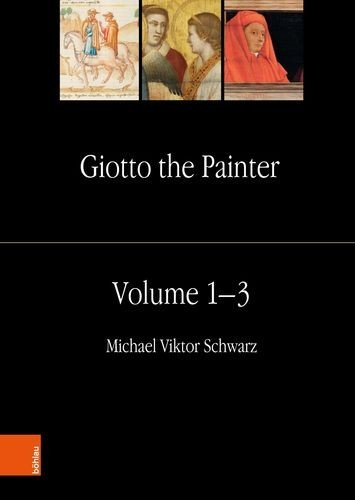- Ebook

Giotto the Painter. Volume 1-3
- Año de edición 2023
Vol. 1: Life Giotto (1334) is the first European artist about whom it is possible to write following the schema of "life and work". The situation of the sources, however, is complicated: On Giotto's life, there are – on the one hand – biographical accounts from the mid-fourteenth century onwards that responded to various ideological requirements (patriotism, humanism, Renaissance ideology, cult of the artist); on the other, there is extensive documentary material from Giotto's lifetime, which seems to reflect less the biography of an artist than that of a bourgeois businessman resolutely climbing the social ladder. The present volume focuses on this second aspect of the Giotto figure's double life relating it to the form of existence of the pre-modern artist. Vol. 2: Works The paintings examined and contextualised in this volume are those secured for Giotto through early written sources. These sources also help to reconstruct the sequence of his works and artistic inventions as is plausible in the context of media culture in the decades around and after 1300: while Giotto was spiritually and intellectually formed in the sphere of the Florentine Dominicans, his artistic path began in Rome in the shadow of the Curia. The breakthrough to his own artistic concept came immediately before and during his work in Padua. In addition to prominent churchmen, ecclesiastical institutions, and the King of Naples, his clients were predominantly members of Italy's urban and financial elites. The adoption and further development of his inventions by other - especially Sienese - painters pressured him in his later years to try new approaches again. Vol. 3: Survival Giotto is considered by many to be the founder of modern painting. This thesis is discussed and modified in the present volume on an empirical basis. What emerges is that Giotto's impact cannot be reduced simply to the introduction of the study of nature. Rather, his art was involved in the development of pictorial idioms that were attuned to the skills and interests of their audiences. The new approaches in his painting contributed in particular to the possibility of examining and communicating psychological, narrative and allegorical content of great complexity outside the media of language and text, which not only changed the face of European art but certainly contributed to the intellectual opening of Western societies.
-
FormatoEbook
-
EstadoNuevo
-
Isbn9783205217350
-
Peso85.6 MB
-
Número de páginas1452
-
Año de edición2023
-
IdiomaInglés
-
FormatoPDF
-
ProtecciónDRM
-
ReferenciaBKW124121
